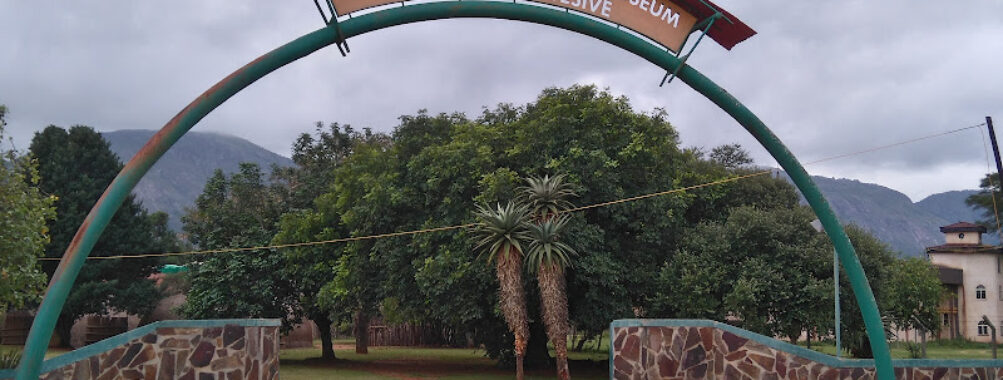
Swaziland National Museum
“`html
Table of Contents
Description
The Swaziland National Museum in Lobamba is one of those places that quietly surprises travelers who wander in expecting a quick look around. What you actually get is a thoughtful mix of history, culture, and nature all packed into a modest space. It was first established back in the early 1970s with the goal of preserving Eswatini’s traditions and stories for future generations. And honestly, that’s exactly what it feels like when you walk through—like stepping into a living archive of the country’s soul.
The museum isn’t massive or flashy, but that’s part of its charm. The exhibits range from traditional Swazi attire and tools to dioramas of local wildlife and even displays on the country’s colonial past. The gardens outside make it feel more relaxed than some of the larger, more formal museums you might have visited elsewhere. It’s the kind of place where you can slow down, take your time, and actually absorb what you’re seeing instead of rushing from one gallery to another.
Now, it’s fair to say not every visitor walks away equally impressed. Some people feel it could use a bit of updating, while others love its simplicity and authenticity. Personally, I think that’s part of the experience—you’re not walking into a polished, high-tech museum. You’re walking into something more grounded, more connected to the community it represents. And that makes it worth a stop if you’re curious about Eswatini’s roots.
Key Features
- Exhibits on Swazi history, from pre-colonial traditions to modern times
- Displays of traditional clothing and artifacts with explanations of their cultural meaning
- Dioramas showcasing native wildlife and highveld landscapes
- Peaceful gardens surrounding the museum, perfect for a short stroll
- Accessibility features including wheelchair-friendly entrances, parking, and restrooms
- Family-friendly environment with exhibits that appeal to children and adults alike
- Restroom facilities available on-site
Best Time to Visit
The museum is open year-round, so the best time to visit really depends on what else you’re planning to do in Eswatini. If you’re already in Lobamba during the cooler, drier months of May through September, that’s a great time since you can pair the museum with outdoor activities nearby without worrying about heavy rains. On the other hand, if you’re visiting during the warmer months, the museum offers a nice break from the sun. I once popped in during a particularly hot afternoon, and it was a welcome pause in the shade before heading back out to explore the rest of the valley.
How to Get There
Getting to the Swaziland National Museum is pretty straightforward if you’re already traveling around central Eswatini. The museum sits in Lobamba, which is the country’s traditional and legislative capital. It’s close to the Parliament and the King Sobhuza II Memorial Park, so you can easily combine a few cultural stops in one go. If you’re driving from Mbabane, it’s only about a 20-minute trip along the main highway. Public transport is available, though it’s not always the most reliable, so if you’re short on time, a rental car or taxi is the way to go.
I remember taking a shared minibus once, and while it was cheap and cheerful, it definitely added a bit of unpredictability to the schedule. But if you’re not in a rush, that’s half the fun—it gives you a chance to chat with locals and get a feel for everyday life.
Tips for Visiting
A visit to the Swaziland National Museum doesn’t require a full day, but it’s worth setting aside at least an hour or two so you don’t feel rushed. Here are a few tips to make the most of your trip:
- Bring some cash: Entry fees are usually small, but it’s easier to pay in cash since card machines can be unreliable.
- Pair your visit: Combine the museum with a stop at the nearby memorial park or cultural village for a fuller picture of Eswatini’s heritage.
- Take your time with the exhibits: Some of the displays might look simple at first glance, but the details and explanations are what make them meaningful.
- Good for families: If you’re traveling with kids, they’ll enjoy the wildlife dioramas and open gardens.
- Accessibility is decent: The museum has wheelchair-friendly features, which isn’t always the case in smaller attractions around the region.
- Go with an open mind: This isn’t a high-tech museum, but it gives you an authentic glimpse into Swazi culture and history.
At the end of the day, the Swaziland National Museum is one of those places that grows on you. It’s not about dazzling displays or interactive screens—it’s about connecting with the stories and traditions of a country that’s proud of its heritage. And if you’re the kind of traveler who values that kind of authenticity, you’ll likely walk away feeling glad you took the time to stop by.
“`
Location
Places to Stay Near Swaziland National Museum
Find and Book a Tour
Explore More Travel Guides
No reviews found! Be the first to review!